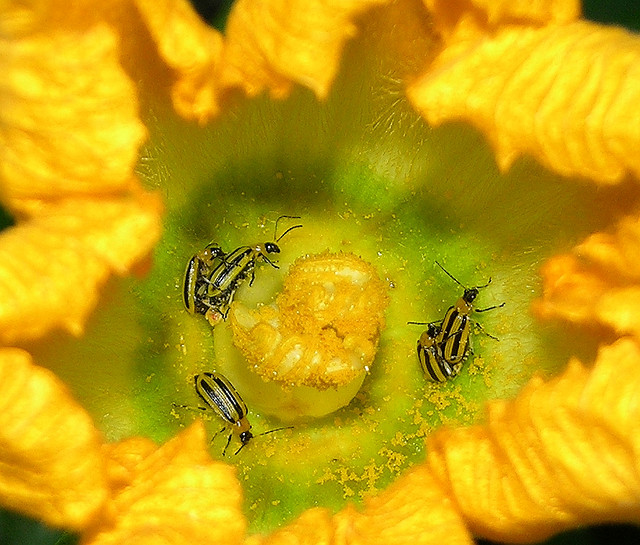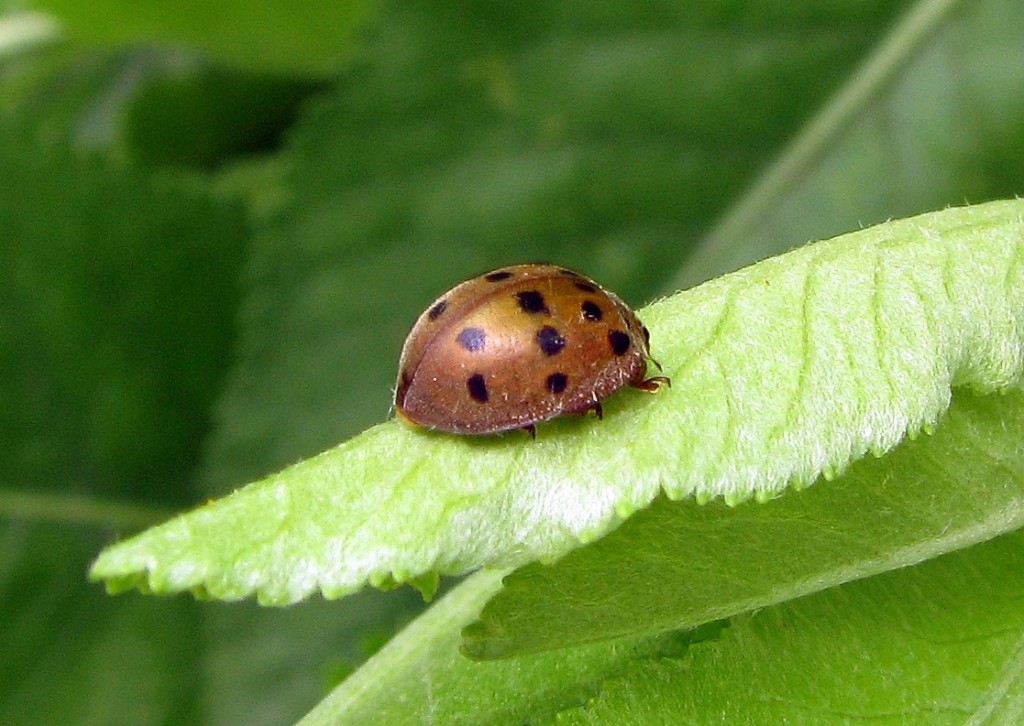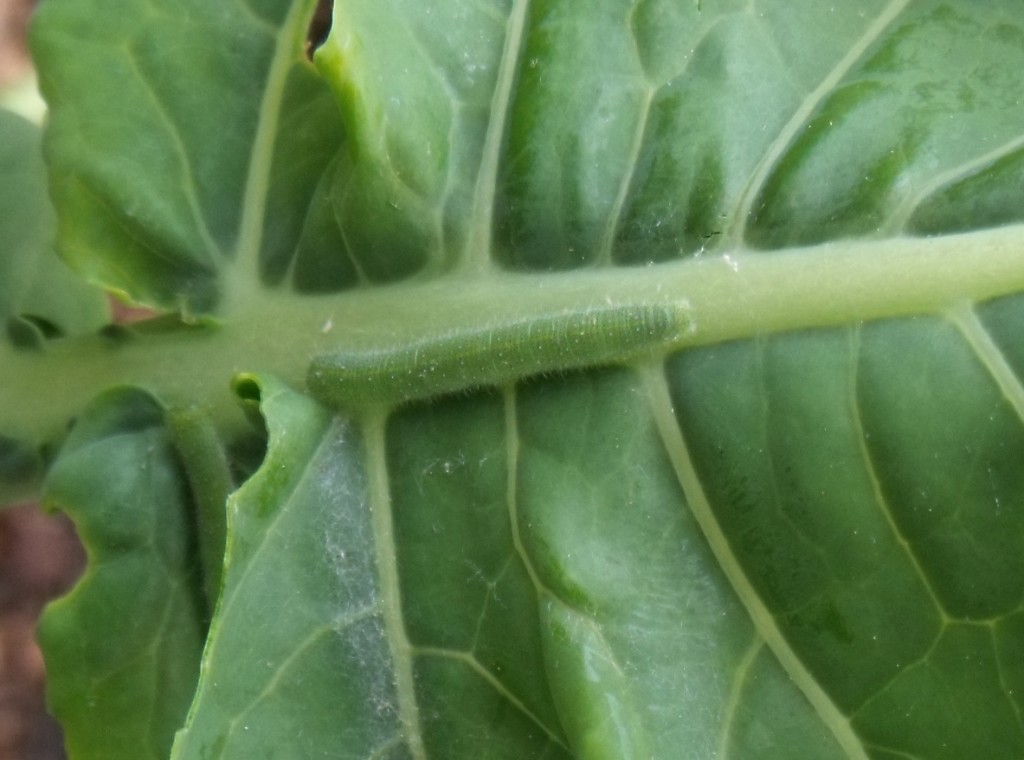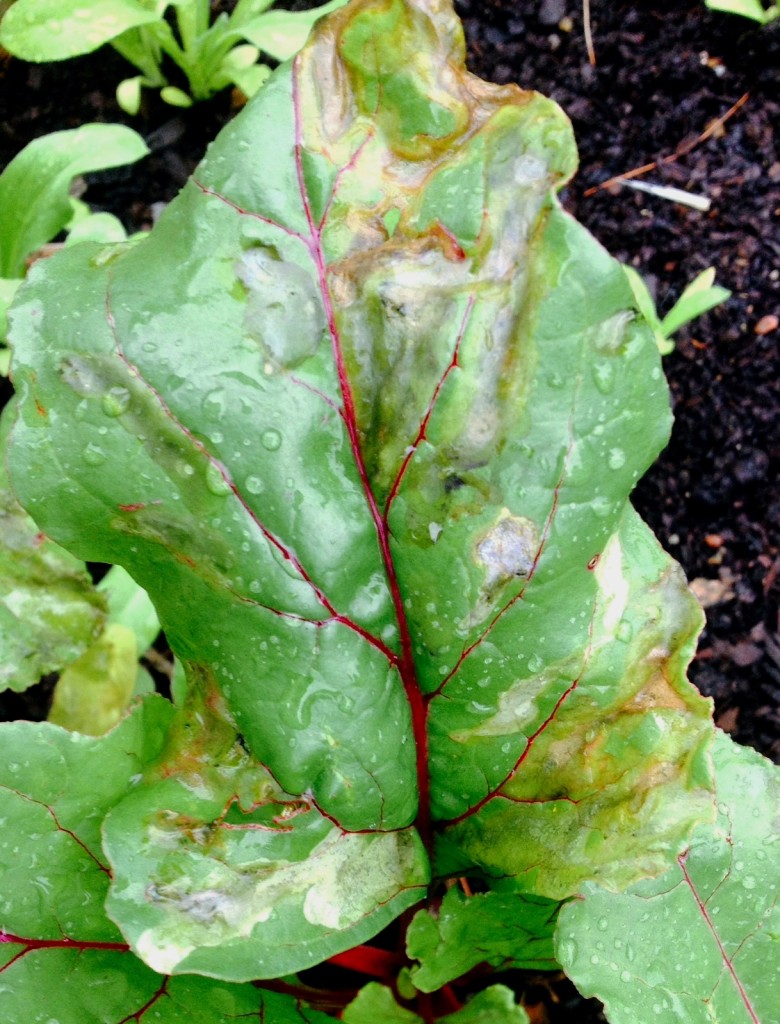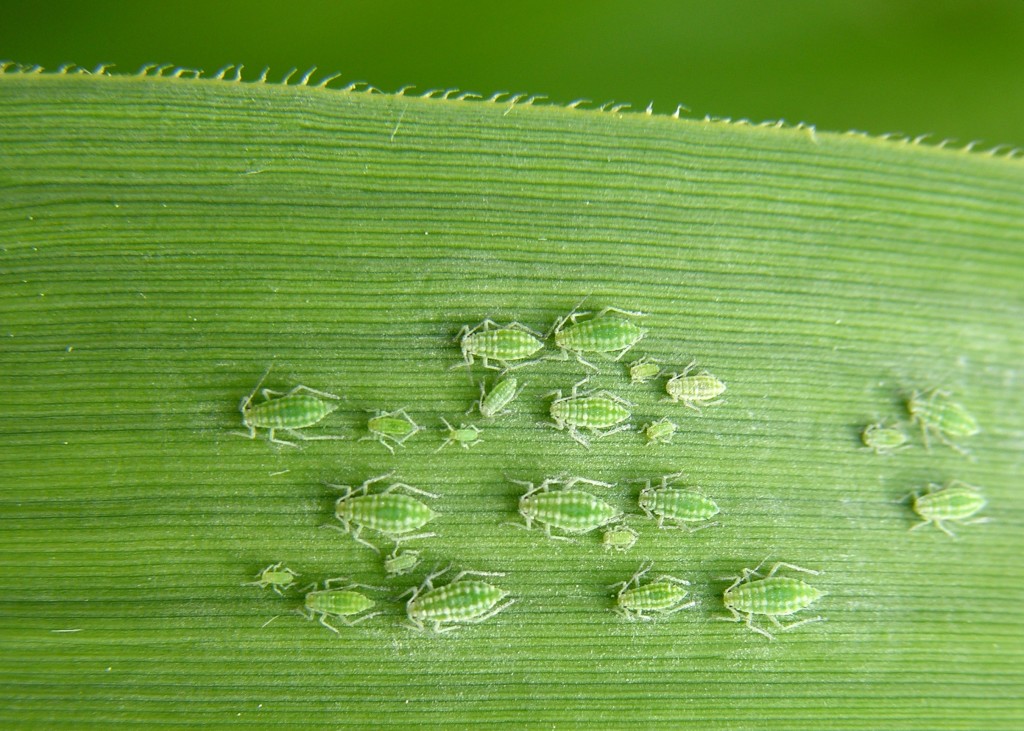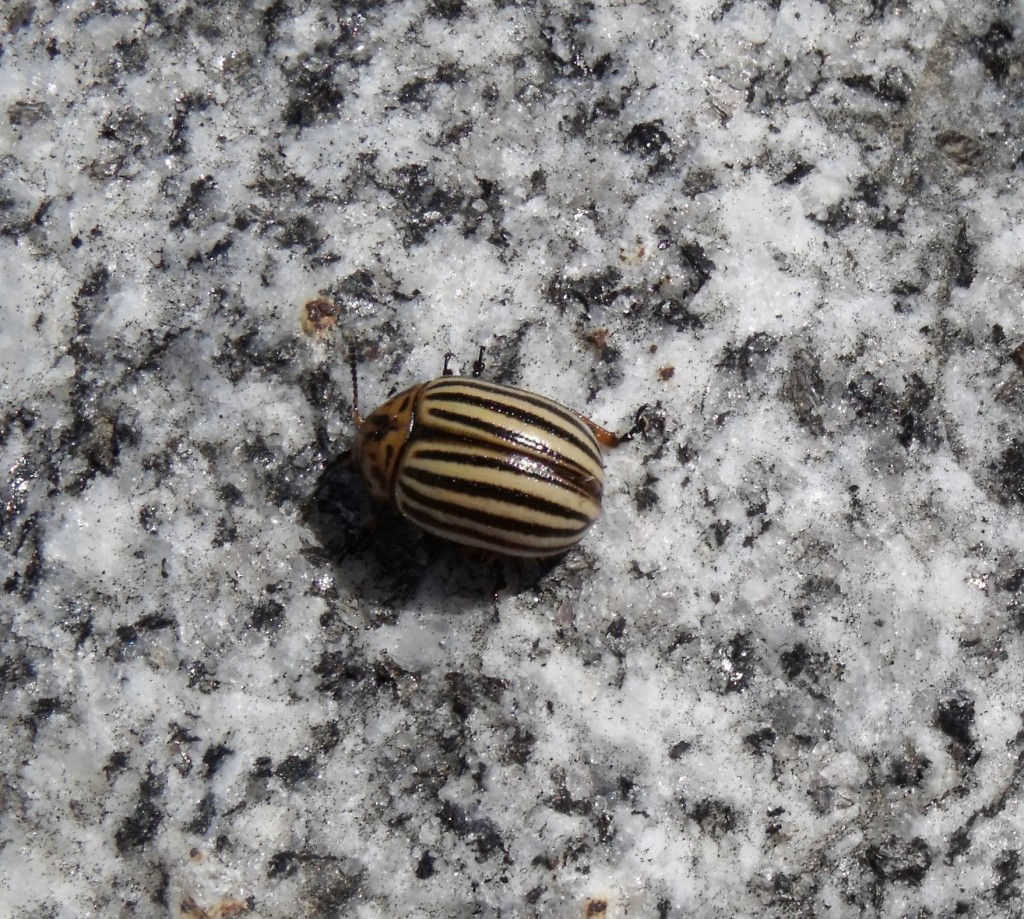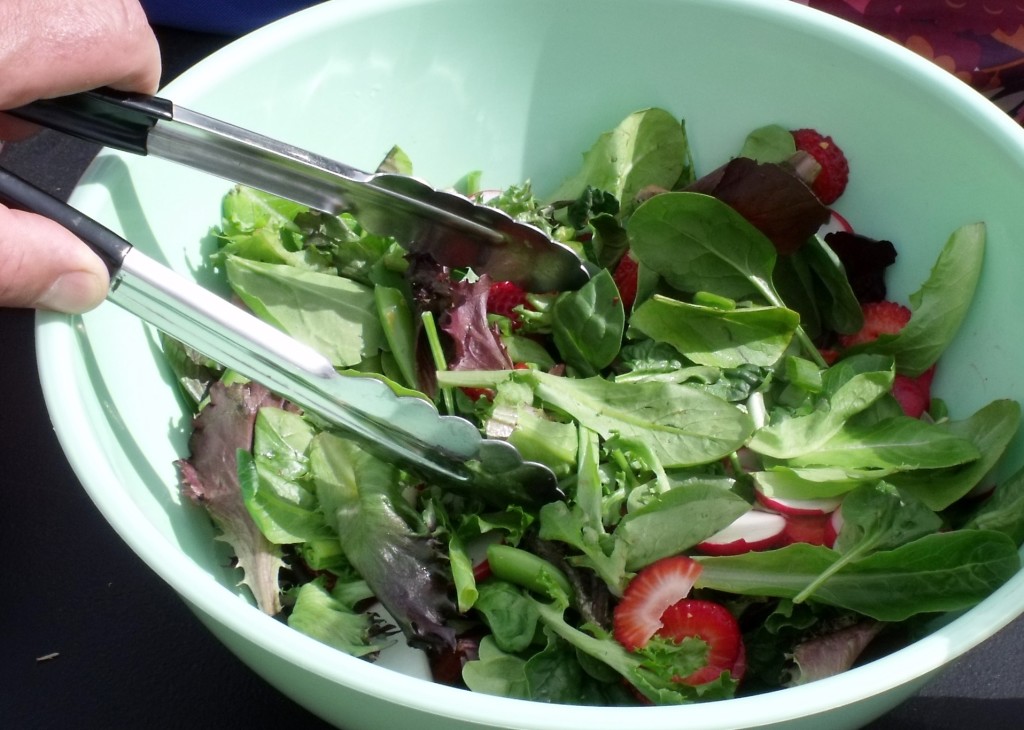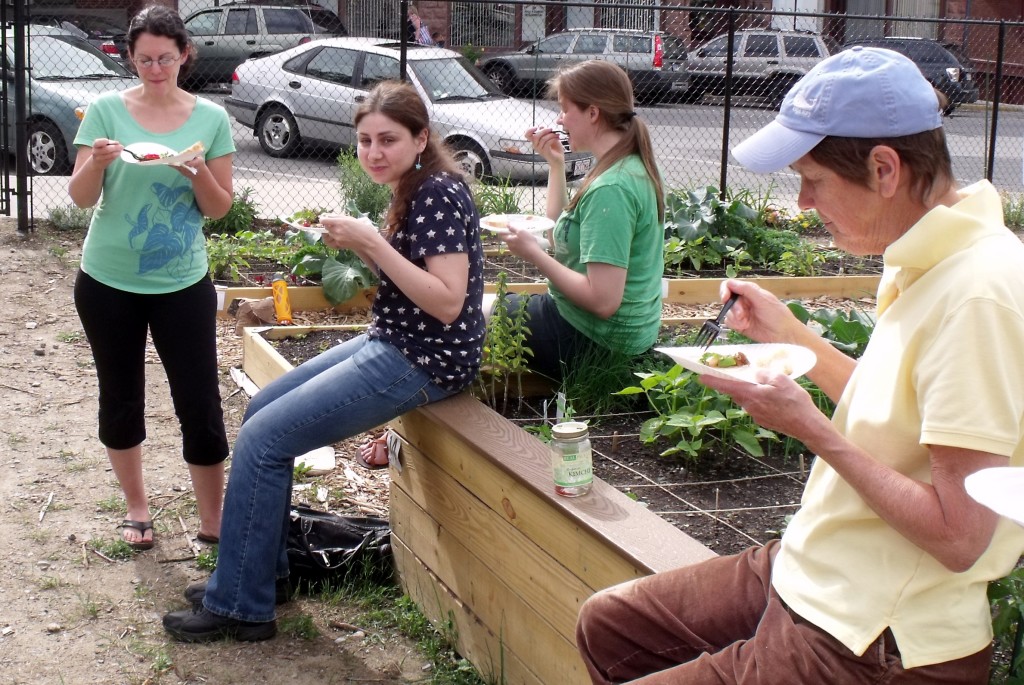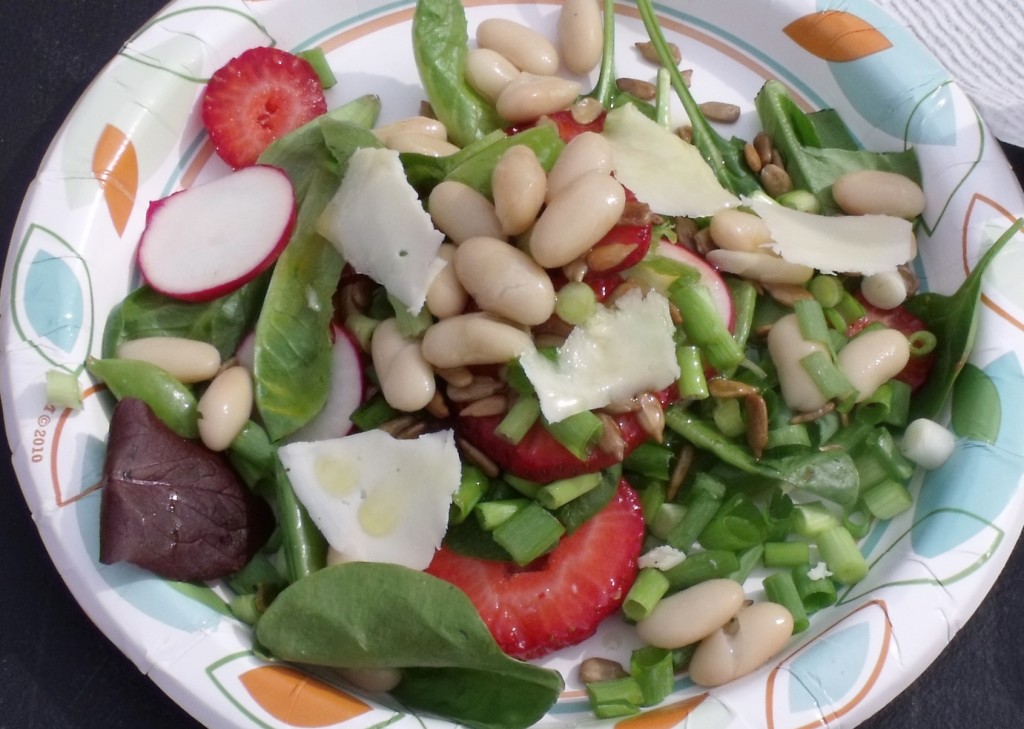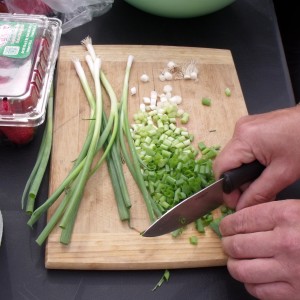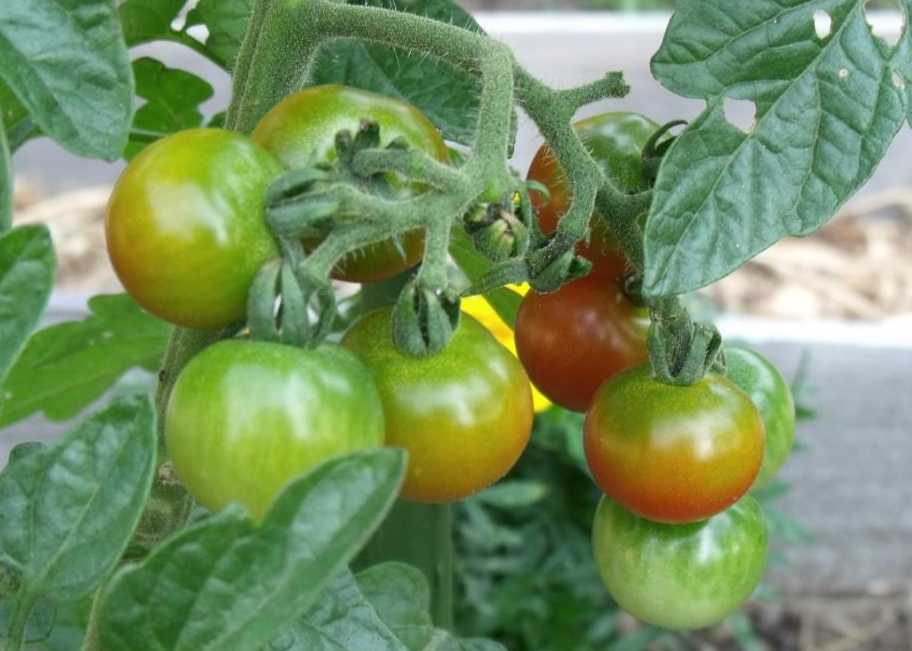
Tomatoes are often the most-prized plant in the garden; the succulence and sweetness of home-grown tomatoes just can’t be found in the grocery store. However, these vines call for more attention and devotion than many other crops. Specifically, most tomato plants require continual staking and pruning, called suckering, to reach their full potential.
Staking Tomatoes
There’s nothing worse than seeing a tomato eaten away by bugs just because it was touching the ground! If tomato plants are not held up, they become highly vulnerable to the damaging effects of bugs and disease. Many different methods exist for supporting tomato plants. Below are a few common techniques and the benefits and drawbacks of each.
The “Cage” Method
Tomato cages are often metal structures placed around each individual tomato plant. The primary benefit of using cages is that you only have to place the cage around once. This saves time in comparison to other methods in which you continually have to tie tomatoes as the plants mature. However, cages are expensive relative to other methods and can make access to the entire tomato plant – along with suckering and harvesting – more difficult because the center of the plant becomes hidden from view.
How to Use Your Cage: Bend the pointed ends outward before pressing into the ground with the tomato transplant neatly inside. Support further with a stake positioned just inside the topmost rung. This will help keep the cage in place.
The Individual Stake Method
This method requires some kind of stake for each individual tomato plant. You can use stakes specifically designed for the job or improvise with a tall sturdy sapling, old broomstick handle, unused ski pole or just about any straight, strong pole. 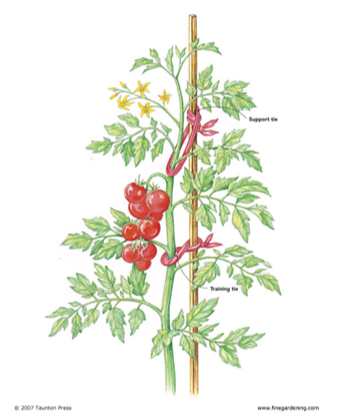 We use metal poles in our teaching gardens because wooden poles have the capacity to carry tomato blight (a devastating disease) from previous seasons. In contrast, metal poles may be reused for eons!
We use metal poles in our teaching gardens because wooden poles have the capacity to carry tomato blight (a devastating disease) from previous seasons. In contrast, metal poles may be reused for eons!
How to Use Your Stakes: Begin by inserting the stake as deep as possible into the soil, about 3-5 inches away from the base of the plant. Use a hammer or rubber mallet to drive the stake firmly into the ground. As the plant grows, tie a strip of old rag, panty hose, string or twine tightly around the stake and loosely around the main stem in a figure eight fashion. The stem needs to remain about 1 inch or more from the stake. If you tie the plant stem too tightly to the stake, the tomato will not be able to grow properly.
The “Florida Weave” Method
The Florida Weave method is used to support multiple tomato vines in a row with a weave of twine running between two strong end posts. This method provides easy access to each tomato plant for suckering and harvesting, is the least expensive option, and is also reasonably quick in comparison to individual stakes.
We selected this method for use in our own Teaching Gardens this season and, so far, have been pleased with the results! Our one suggestion: use sturdy end posts and be sure they are firmly in the ground as the weight of the mature tomato plants will slowly pull the stakes toward each other. We used narrow metal posts because they don’t harbor blight from season to season, but for this method, thicker wooden stakes might be the better bet.
How to Do the “Florida Weave” Method: This method sounds complex in writing, but we promise it’s simple in practice, so don’t be put off by the number of steps to get things started. Once the posts are in place, the weave is very simple to maintain.
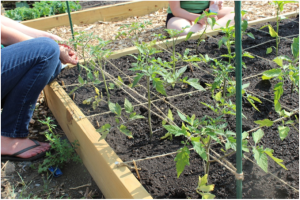
Begin by inserting a stake as deep as possible into the soil, about 3-5 inches away from the base of the tomato plant at the beginning of your row. Use a hammer or rubber mallet to pound the stake into the ground. Repeat this process for the tomato plant at the end of the row. Take your ball of twine or string and tie a knot to secure it to the stake. Grip the twine and “weave” it behind your first tomato plant, in front of your second tomato plant, behind your third tomato plant, and so on. When finished, tie the twine to the second pole. Repeat the process starting from the other post. When you’ve completed the process, your tomato plants should be enclosed by figure eights. As the plants mature, continue to string twine every 6-8″ to provide additional support.
Stake early, support often
Whichever method you choose, supporting your tomatoes as early as possible, preferably within a week or two of transplanting, will make life easier on you. The longer you wait, the more unruly your tomatoes will become and the more difficult the tying or caging process will be. If you choose to stake your tomatoes, continue to add support every time the plants have grown about 6 to 8″ to keep them in line.
Suckering Tomatoes
What is a sucker?
While not absolutely necessary, pruning tomato plants can maximize the number, size and flavor of your tomatoes. During their first several weeks in the garden, before blossoms emerge, tomato plants put their energy into growing new leaves and extra branches to hold those leaves. These side stems grow directly off the main stem. Suckers are new branches that grow out of t he tomato’s main stem, just above a side stem (in the “crotch”). A tomato plant will produce suckers throughout the growing season.
he tomato’s main stem, just above a side stem (in the “crotch”). A tomato plant will produce suckers throughout the growing season.
Why prune suckers?
Although it requires a bit of extra work, removing the suckers from your plants is beneficial in several different ways.
Earlier production. Fewer stems on the plant means more of the plant’s energy will go into producing fruit rather than growing stems and leaves, ultimately resulting in an earlier harvest.
Larger, healthier fruit. Overgrowth often results in the plant producing its own shade. Less sun reaching the leaves means less energy produced and available for fruit growth. Suckering ensures the maximum amount of sun reaches the leaves, is converted into energy and produces large, healthy tomatoes.
Disease prevention. Dense leaf growth can trap excess moisture and promote the spread of disease. Pruning alleviates this and allows for air to circulate around the plant.
How do you prune suckers?
Pruning suckers is best done when the shoots are as small and vulnerable as possible. Carefully grasp the base of the sucker and pinch it between your thumb and forefinger. This method is preferable to clipping or slicing as it results in a smaller wound on the plant that will heal more quickly. However, if a sucker has gotten away from you and grown too large to pinch easily, a clean cut with a sharp blade is better than a ragged wound created by wrenching and twisting off a branch.
Much to our dismay, a sucker once pruned is NOT gone forever! Tomatoes will often continue to produce additional suckers in the same stem-branch joint, so keep your eyes peeled and your pruners ready!
So go to it, Gardeners. Stake early, support often, prune with vigilance, and you’ll have prize-wining tomatoes before the summer is through!
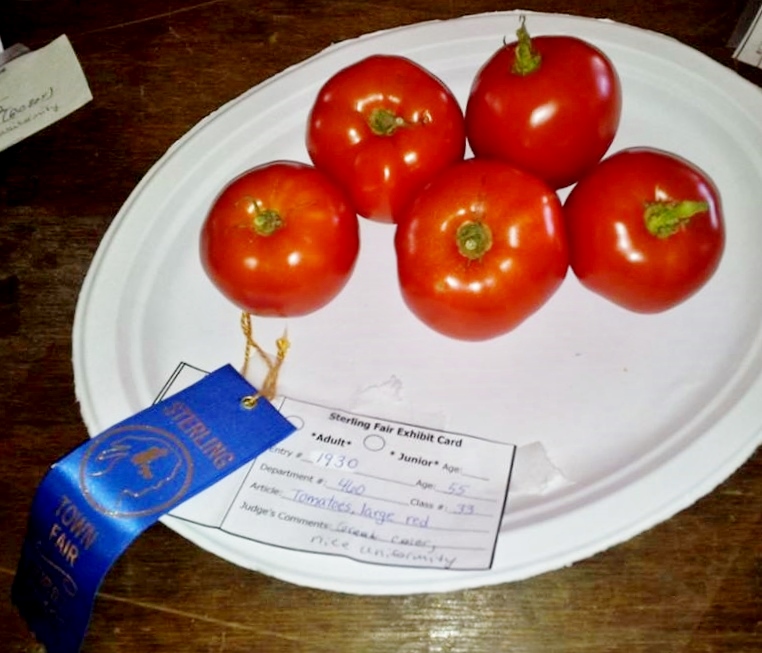

 (illustration credit: www.chestofbooks.com from Pictorial Practical Vegetable Growing, Walter P. Wright)
(illustration credit: www.chestofbooks.com from Pictorial Practical Vegetable Growing, Walter P. Wright)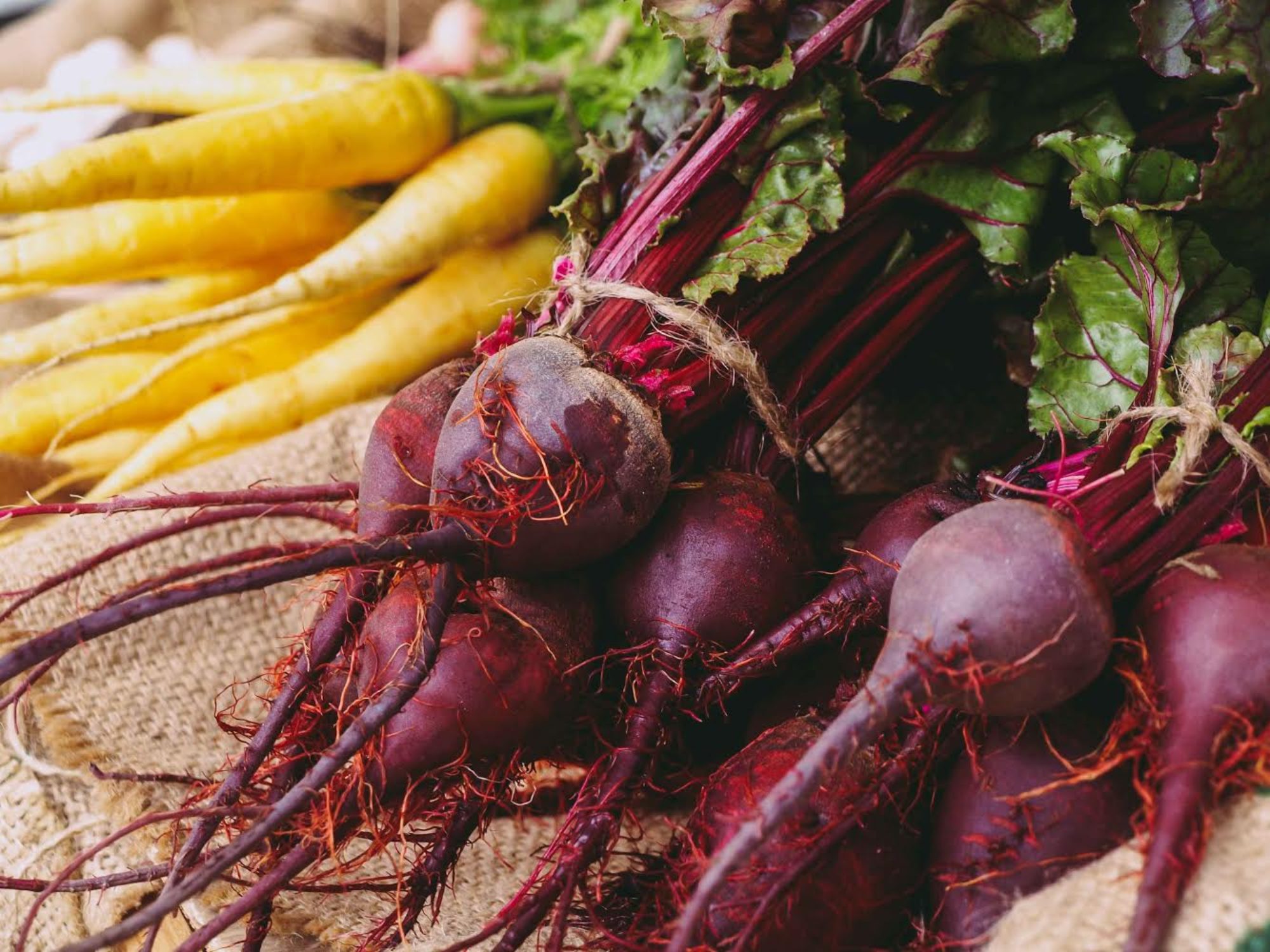
 We thought we’d share how everything is doing in our Teaching Gardens now that we’re halfway through our season. Compare with your own gardens and let us know if you’re having similar luck (or misfortune) in your neck of the woods!
We thought we’d share how everything is doing in our Teaching Gardens now that we’re halfway through our season. Compare with your own gardens and let us know if you’re having similar luck (or misfortune) in your neck of the woods! BEETS– Eeks. Do we have to start with them? Leaf miner has been making a steady meal of the greens, despite our best efforts to squish the little white egg sacks on the leaf undersides. Our greens are also not especially green; they’ve gone reddish purple (and, no, they’re not a purple-leaf variety). Phosphorous deficiency? The wrong pH for beets, which prefer between 6.0 and 7.0? We’ll be soil testing in the fall to pin down the culprit.
BEETS– Eeks. Do we have to start with them? Leaf miner has been making a steady meal of the greens, despite our best efforts to squish the little white egg sacks on the leaf undersides. Our greens are also not especially green; they’ve gone reddish purple (and, no, they’re not a purple-leaf variety). Phosphorous deficiency? The wrong pH for beets, which prefer between 6.0 and 7.0? We’ll be soil testing in the fall to pin down the culprit.
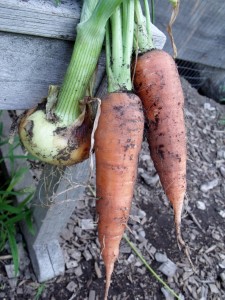
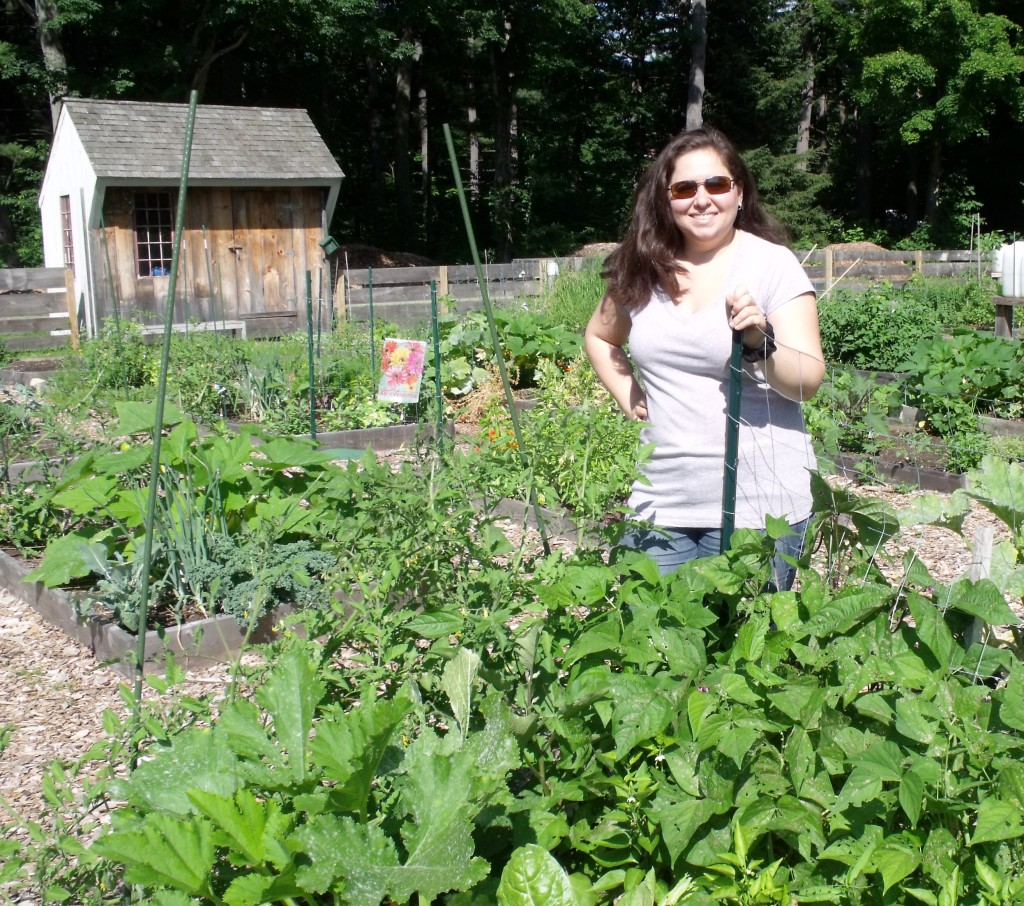 SQUASH – It’s that time of the season. The zucchini and summer squash have begun producing and the recipes for using them up have begun to dot our Teaching Garden conversations.
SQUASH – It’s that time of the season. The zucchini and summer squash have begun producing and the recipes for using them up have begun to dot our Teaching Garden conversations.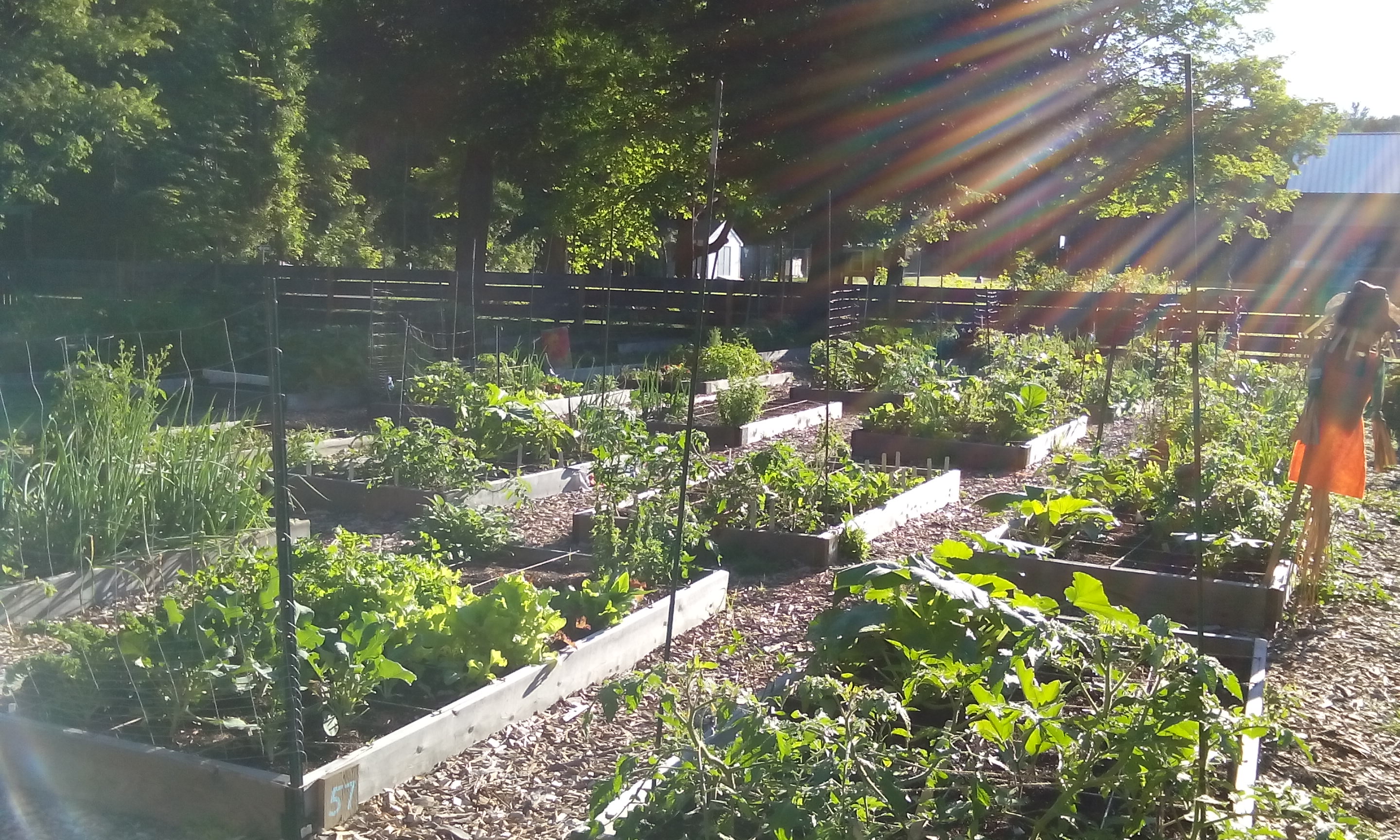 And that’s what’s growing in our Teaching Gardens! Let us know what you’re seeing in your own plots and we’ll keep you posted as the harvest continues. Happy gardening!
And that’s what’s growing in our Teaching Gardens! Let us know what you’re seeing in your own plots and we’ll keep you posted as the harvest continues. Happy gardening!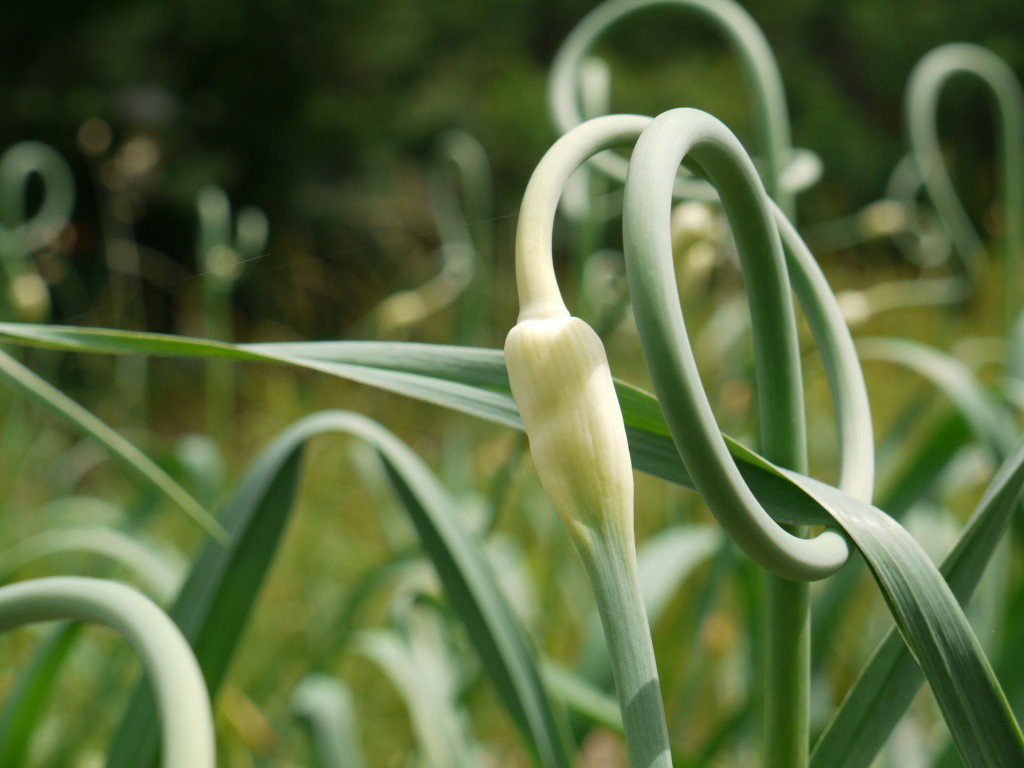
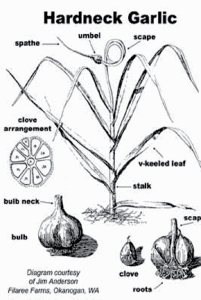 A scape is the flower stalk of the maturing garlic bulb. It begins as a straight stem, bends into a marked curlicue in early July, and then, as it prepares to open, straightens out again. In its early stages, the scape is most tender and ideal for harvest. Once the stem straightens out the second time, it becomes tougher, woody, and less desirable. The full harvest season lasts only a few weeks, so keep an eye on them or you’ll miss it!
A scape is the flower stalk of the maturing garlic bulb. It begins as a straight stem, bends into a marked curlicue in early July, and then, as it prepares to open, straightens out again. In its early stages, the scape is most tender and ideal for harvest. Once the stem straightens out the second time, it becomes tougher, woody, and less desirable. The full harvest season lasts only a few weeks, so keep an eye on them or you’ll miss it!
 We use metal poles in our teaching gardens because wooden poles have the capacity to carry tomato blight (a devastating disease) from previous seasons. In contrast, metal poles may be reused for eons!
We use metal poles in our teaching gardens because wooden poles have the capacity to carry tomato blight (a devastating disease) from previous seasons. In contrast, metal poles may be reused for eons!
 he tomato’s main stem, just above a side stem (in the “crotch”). A tomato plant will produce suckers throughout the growing season.
he tomato’s main stem, just above a side stem (in the “crotch”). A tomato plant will produce suckers throughout the growing season.
